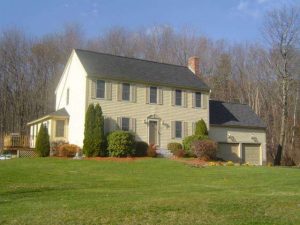How to Make Your Home More Energy Efficient and Get some Valuable Tax Breaks
By Mark J. Donovan
|
|
By making your home more energy efficient you can take advantage of a number of new tax breaks that will mitigate some of the costs of your home improvements. In 2005 an Energy Tax Incentives Act went into effect that provides tax breaks for those individuals who invest in their homes to make them more energy efficient. The law provides a tax credit of up to $500 for energy saving home improvements made on a residential home after 12/31/05 and before 01/01/08. In addition, it stipulates that up to $200 of the tax credit can be applied directly to the installation of energy efficient windows.A tax credit is different than a tax deduction. Whereas a tax deduction allows you to lower your adjusted gross income, a tax credit allows you to deduct your total taxes owed by the tax credit amount. |
Consequently a tax credit represents a significant savings in taxes owed to the federal government. For example, if your annual federal tax payment was initially calculated to be $2,000, with the $500 tax credit applied the federal tax payment would be reduced to $1,500, a 25% savings.
Summarized below are the highlights of the new tax breaks for energy efficient homes.
Again, there is a lifetime tax credit of up to $500.00, $200 of which can be applied to the cost of installing new and energy efficient windows.
Up to 10% of the cost of building envelope materials can be applied to the tax credit. Building envelope materials include items such as:
- Insulating material
- Metal roofing material that includes a pigmented coating material to reduce heat gain into the home.
- Exterior windows
- Exterior doors
| The material has to be new and have a lifetime of at least 5 years to qualify for the home improvement tax credit. In addition, it must provide value in terms of making the home more energy efficient.
To qualify for the tax credit the home must be your primary residence that you own and be located in the United States. Consequently the new tax breaks for energy efficient home improvements does not apply to vacation homes, second homes, or rental property. |
 |
Relative to specific energy efficient property expenditures the following max limits can be applied for in the tax break.
For help on building a home addition, see HomeAdditionPlus.com’s Home Addition Bid Sheets. Our Home Addition Bid Sheets provide you with the knowledge and information on how to plan a home addition project, and what to look for when hiring contractors. They also include detailed cost breakdown tables and spreadsheets for estimating your own new home addition building costs.
Related Information
- Home Remodeling Projects that Add Real Value
- Remodeling Your Home and How Much is Too Much
- Buying an Unfinished Home Just May Be Your Answer
Free Home Addition Price Quotes with No Obligation!
Fill out our 3-5 minute quick and easy form, and receive a free price quote on a house addition from one of our prescreened and licensed home addition contractors. This process is free and there is no obligation to continue once you receive your house addition price estimate.

